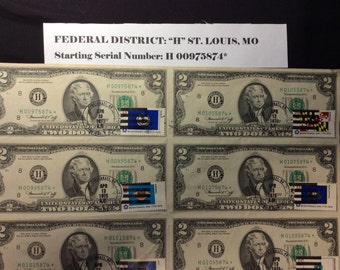

Two-dollar bills produced between 1953 to 1963 are typically worth about 4 to 6. However, it might be worth two or three times face value (4 to 6) if it has an interesting post office stamp on it. Fun Fact: Since two dollar bills are so lightly circulated, they have an average life span of six years. United States one hundred dollar bill information and security features of redesigned note, Color-Shifting Ink, Watermarks, Security Thread, Updated Portrait and Vignette, Low-Vision Feature. In most cases, a pristine 1976 2 bill is worth slightly more than face value (2 to 3).
BICENTENNIAL 2 DOLLAR BILL SERIAL NUMBER LOOKUP SERIAL NUMBERS
This is a closeup of the serial numbers on a genuine 0. The highest bill ever printed, however, was a 100,000 note that was. While the Thomas Jefferson portrait remained the same, the reverse of the bill was changed to an illustration of the signing of the Declaration of Independence. About 2 bill number dollar lookup serial In fact the first two dollar bills were printed in 1862 and they were common place in American commerce until the early 1970s. This signified that the bill was no longer a United States Note. As such, the seal was changed from red to green.

It was reintroduced in 1976 as a Federal Reserve Note.

For ten years the two-dollar bill remained discontinued.Uncirculated bills with consecutive serial numbers can fetch an even higher price. The two-dollar bill was later discontinued in 1966 due to its unpopularity as an available circulation note. About 2 lookup bill number serial dollar It shows on the setup screen (F2 at powerup) and is also printed on a label on the bottom of the system or inside the batteryDollar Bills - Dollar Tree, Inc. As a United States Note, the two-dollar bill was printed in three different series, 1928, 1953, and 1963.The red seals found on these two dollar bills indicated that they were United States Notes. The modified notes were printed with red seals, a portrait of Thomas Jefferson on the obverse side and a rendition of his home, Monticello, on the reverse of each bill. At this time, the two-dollar bill was converted to a smaller size. New legislation set forth in 1929 declared a standard printing size for paper money in the United States.The oldest of these large note variations dates back to 1862. Before printed money was standardized and produced at a specific size, the two-dollar bill spent its early life in the form of many different large note designs.


 0 kommentar(er)
0 kommentar(er)
